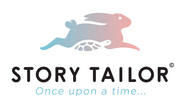Storytelling and Imagination: The Role of Clothing in a Child's Development

Children's storytelling and imagination are important because they help kids learn important life skills like problem-solving, empathy, and creativity. A child's wardrobe can have a significant impact on encouraging creative thinking and the development of their narrative skills.
A child's wardrobe can inspire their imagination, open doors to new experiences, and shape their sense of self. Children develop a deeper understanding of who they are with each choice they make, whether it's frocks for girls or casual shirts for boys.
This is why clothing plays an important role in a child’s development:
It shapes their personality
When it comes to babies and toddlers, adults have a crucial part in defining their identities through the clothing they choose for them. The vast majority of parents and caregivers dress their children in clothes that represent their own values, ideologies, and fashion sense.
The clothes they wear can play a role in shaping their personalities and identities. Children can explore their own identities and the identities of others through dress-up. A child's imagination and inventiveness can benefit from playing pretend as diverse characters, such as a superhero, princess, or pirate. Children might also benefit from learning about historical and cultural periods through clothing.
Learning about the traditions of other cultures is facilitated when kids get to dress up in the appropriate garb.
Helps in exploration
Children, especially infants, have a lot of personality. Even newborn clothes can convey so much information about that infant’s style. Children express themselves through their bodies, speech, movement, toys, art, imagination, and clothing. When kids reach the age of reason and free will, they often begin experimenting with how they dress as a means of establishing their own unique sense of self.
Most adults know that young people often use clothing and accessories as a way to express themselves socially and individually. However, even at a young age, children start to develop a sense of themselves through the clothes they wear.
The people in a child's life should steer them in the right direction. Letting them use clothing as a tool for self-exploration can help them learn valuable lessons and develop essential skills.

It inspires creativity
Children's clothing may do more than just keep them warm; it can also inspire them to use their creativity. A child's imagination can be sparked by clothes, which can serve as a visual cue. A child may see a cowboy hat and picture himself riding the range, while a child may see a cape and picture themselves as a superhero swooping through the air.
It fosters emotional maturity and social awareness
Children's clothing can play a role in fostering emotional maturity and social awareness. Putting themselves in the shoes of a fictional character helps kids develop empathy and a sense of perspective.
Children can benefit from this since it can help them grow in emotional intelligence and gain empathy. A child can learn empathy for people less fortunate by pretending to be someone else, like a doctor.
Powerful storytelling tool
Children benefit greatly from hearing stories read aloud to them because it encourages the growth of their language abilities, imagination, and analytical reasoning.
There are many ways to tell stories, from listening to others tell them to making up one's own. Clothing may be a powerful storytelling tool since it can give young listeners a feeling of setting and time.
Full use of imagination
Kids can use their imaginations to the fullest when they play dress-up. Dressing up as a knight and pretending to fight off dragons is a common fantasy for young children. By dressing up, a youngster can better visualise themselves in a different setting, such as a mediaeval castle or a forest adventure.

